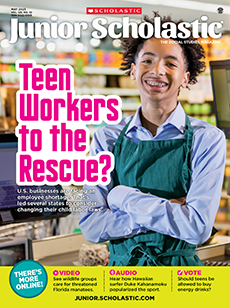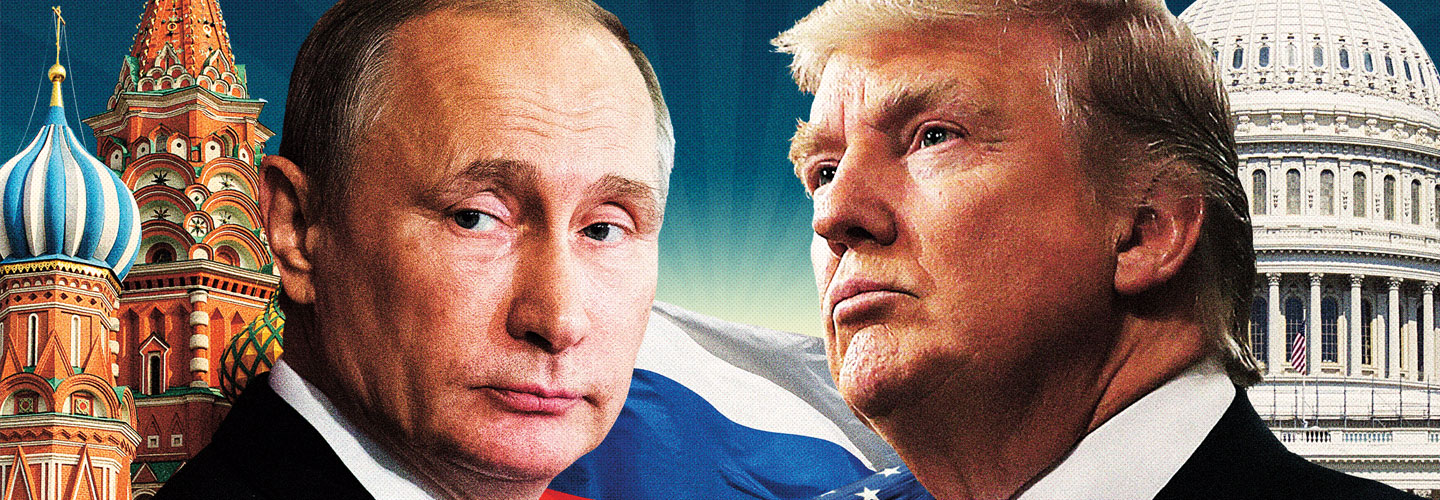The United States and Russia don’t have much in common. The U.S. is the world’s oldest democracy, with a long history of defending the independence of other nations. Russia has an authoritarian government that suppresses its critics and recently invaded the neighboring nation of Ukraine. For most of the past century, the U.S. and Russia have teetered between mutual mistrust and planet-threatening nuclear confrontation.
Today, Russia stands accused of meddling in the 2016 U.S. presidential election by hacking into the emails of Democratic Party officials. Yet since taking office, President Donald Trump has seemed set on forgetting the past and becoming friends with Russia and its autocratic leader, Vladimir Putin.
Trump has praised Putin on Twitter, calling him “highly respected” and “very smart.” Some of Trump’s other public statements have also pleased Russia. He has said, for example, that America’s commitment to defending its European allies from Russian aggression may not be set in stone.
Putin has returned the favor, describing Trump as “very talented” and arranging praise for him in Russia’s state-controlled media. In phone calls after Trump’s election, the two presidents set an ambitious agenda for cooperation. They discussed working together on terrorism, Syria’s civil war, the Arab-Israeli peace process, and the threat of nuclear programs in Iran and North Korea.
Such talk of teamwork is an incredible turn of events. In recent years, the relationship between the U.S. and Russia had sunk so low that many experts feared any new misunderstanding could trigger an international crisis—or worse.
Trump’s embrace of Putin could provide an opportunity for a “reset” of U.S.-Russia relations. But some experts say the countries’ interests are so at odds that it may be hard for the two strong-willed leaders to cooperate without eventually clashing.
The United States and Russia do not have much in common. The U.S. is the world’s oldest democracy. It has a long history of defending the independence of other nations. Russia has an authoritarian government that clamps down on its critics. It recently invaded the neighboring nation of Ukraine. For most of the past century, the U.S. and Russia have teetered between mutual mistrust and planet-threatening nuclear confrontation.
Today, Russia stands accused of meddling in the 2016 U.S. presidential election by hacking into the emails of Democratic Party officials. Yet since taking office, President Donald Trump has seemed set on forgetting the past. He has talked of becoming friends with Russia and its autocratic leader, Vladimir Putin.
Trump has praised Putin on Twitter, calling him “highly respected” and “very smart.” Some of Trump’s other public statements have also pleased Russia. He has said, for example, that America’s commitment to defending its European allies from hostile acts by Russia may not be set in stone.
Putin has returned the favor, describing Trump as “very talented.” He also arranged praise for him in Russia’s state-controlled media. In phone calls after Trump’s election, the two presidents set an ambitious plan for cooperation. They discussed working together on terrorism, Syria’s civil war, the Arab-Israeli peace process, and the threat of nuclear programs in Iran and North Korea.
Such talk of teamwork is an incredible turn of events. In recent years, the relationship between the U.S. and Russia had sunk very low. Many experts feared that any new misunderstanding could trigger an international crisis, or worse.
Trump’s embrace of Putin could offer a chance for a “reset” of U.S.-Russia relations. But some experts say the interests of the two countries are very different. That may make it hard for the two strong-willed leaders to cooperate without eventually clashing.

